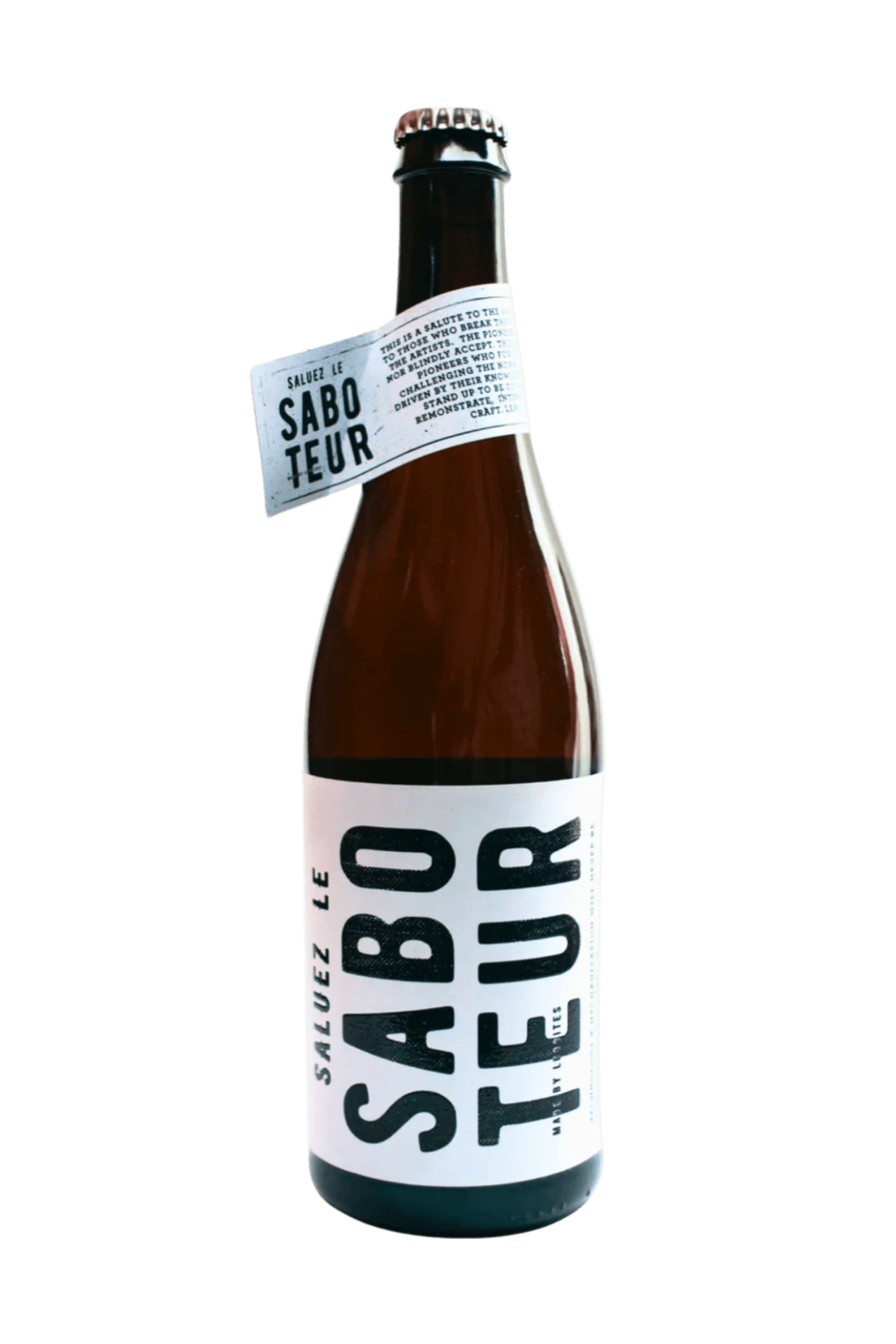From the winemaker:
As the Luddite Saboteur White gains more following, we continue to grow this wine always keeping quality in mind. So, with this said, this is the first vintage where we sourced fruit from Standford which still keeps the wine to the Cape South Coast region. Very tricky harvest as it rained heavily but luckily, we picked early for freshness and acidity, therefore missing the rain.
We continue to have skin contact on the Chenin and Viognier to give some tannin, texture and structure to the wine. Both varietals spent 12 days on skins with morning and evening punch-downs. We then pressed, taking as much lees and sediment to barrel to complete the fermentation. We also did a small portion of tank fermentation Chenin Blanc for extra primary fruit. The Sauvignon Blanc is whole-bunch pressed and pumped directly to barrel without settling to ferment. All the components spent 7 months in old French Oak barrels with regular batonnage.
We racked and blended the 3 components, always having food and drinkability in mind. The 2023 blend is 77% Chenin Blanc, 13% Blanc Fumé and 10% Viognier. We hope that we have continued to achieve our goal which is to have a serious, well-structured yet refreshingly fruity white wine.
About Luddite:
Niels & Penny Verburg met at a party in the mid-1980s as recent high school grads. They discovered each would be attending the same agricultural college later that year and quickly became friends. As romance blossomed, they decided that after college they would dive head-first into the wine industry. Niels would be a winemaker, and Penny a vineyard manager.
Sadly, these were the darkest days of Apartheid and things were not so simple. With a horrible regime nearly defeated, but fighting to the bitter end, South Africa offered virtually no opportunity to prosper. So, the couple was forced to leave their homeland in 1990 in search of greener pastures. Niels was fortunate during this time to make wine in France, Chile, New Zealand, Australia, and Greece, while Penny worked alongside him in the vineyards.
In 1994, when Apartheid ended, the couple saw their opportunity to return to South Africa, and within a year, were back home. Niels took a job making wine at Beaumont Family Wines, the most historic property in Bot River and after eight years, he and Penny decided it was time to branch off on their own.
The couple purchased nearly 30 acres of land just a couple of kilometers down the road from Beaumont, at the base of the Houw Hoek Mountains. At this time, this hilly landscape was nothing but shrubs that took years to clear. But they took it slow – the Luddite way. After the land was cleared, they planted the first vineyards in 2001. Then their wine cellar was built, followed by planting another parcel of vineyards. The last step was building the production facility.
The entire process took 10 years. In the end, Luddite Wines was one of the first to plant Shiraz in Bot River, their Chenin Blanc is one of the best in the world, all their vines are practicing organic and dry farmed, and their winemaking technique is as ‘minimal’ as minimal intervention can get. Luddite is, without a doubt, a top producer in South Africa. The Verburgs are legends, too, having influenced many winemakers along the way to simplify and let the land speak. Go to any establishment related to wine (or food) in South Africa, and their work is immensely respected.
The Verburg’s greatest influence are the Luddites; they often refer to themselves as such. The Luddites were a group of British rebels during the industrial revolution concerned their jobs would be replaced by mechanization, so they rallied against it. The Verburgs do not take Luddism as a by-all means halting technological progress. Moreso, their philosophy is to use nature and their hands as much as possible, and machinery only when necessary. This translates into an experience entirely of their region; a place with gentle rolling hills dotted with fynbos, a slow-moving river, and cool ocean air converge into something so perfect for wine. This experience just couldn’t be captured with a machine-led operation.

